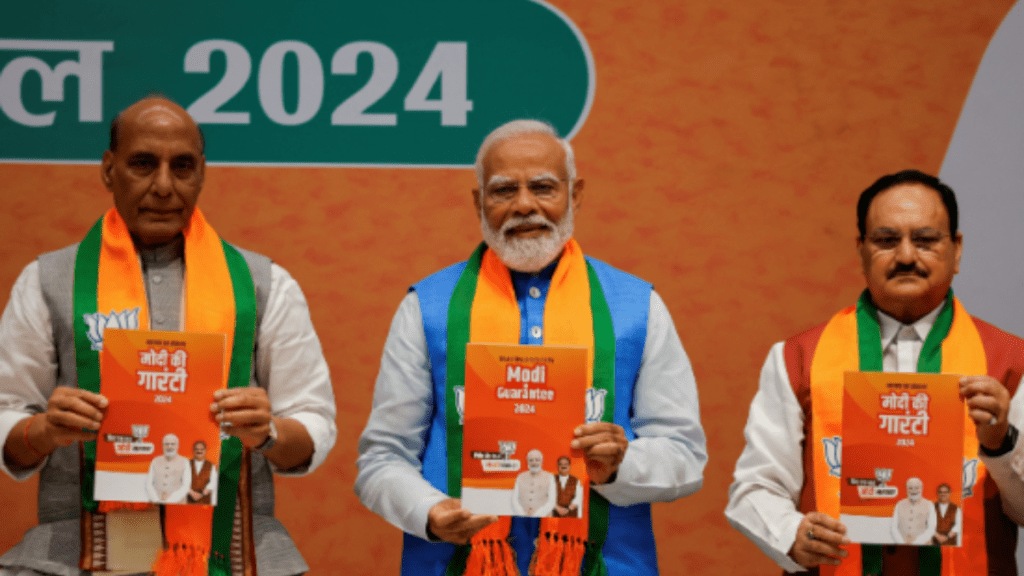By Badri Narayan
The first 100 days of Prime Minister Narendra Modi’s third term may be perceived as 100 days of conviction, commitment, and consensus. It is a co-incidence that PM Modi’s 74th birthday and the completion of the 100 days fell on the same day, that is September17. This date, marked by the dual celebrations, also provided a moment to analyse Modi’s politics and governance pattern at the beginning of his third term.
Modi celebrated his birthday in Bhubaneswar, Odisha, by interacting with beneficiaries of Pradhan Mantri Awas Yojana-Urban and launched the Subhadra scheme started by the Bharatiya Janata Party-led state government and centred on women empowerment by way of financial independence. In the process, he continued to reflect an image of “vikas purush” or one focused on development. The message he sent on his birthday was that of a “vikas purush” for the marginalised, poor, and vulnerable sections such as women and tribals. He and his government also asserted a strong conviction to work to achieve the mission of “viksit Bharat” (developed India). Therefore, on that day, Union home minister Amit Shah released a booklet titled “Paving the path to Viksit Bharat”. He also issued eight flyers depicting the achievements of the 100 days of the new National Democratic Alliance government.
Political analysts had predicted Modi’s third successive term as a challenging one. He formed the government this time with a narrower margin compared to 2014 and 2019. Another challenge, which he did not face in the first two terms, is depending on allies such as Janata Dal (United) and the Telugu Desam Party. But despite these challenges, the first 100 days of his term have been marked by significant policy introductions and potentially transformative initiatives.
The Opposition has created pressure on the government with caste-based identity politics in this term, even as Modi is working with a vision of “sabka saath, sabka vikas” (everyone’s support and development). The pattern of governance so far shows that he is striving to weave a fractured society into a whole without giving in to the pressures of votebank politics. For him, electoral politics and development politics may be linked to an extent, but beyond that the latter is part of the larger goal of “viksit Bharat”.
To fulfil the mission of “sabka vikas”, he has held infrastructural development as the most effective strategy. As a result, projects worth `3 trillion were approved in the 100-day period. His focus is to build and expand roads, railways, ports, and the aviation network. Among these, Maharashtra’s mega Vadhavan port could be a big achievement; it is expected to be one of the top 10 ports globally. The government has also approved the construction or upgrade of 62,500 kilometres of roads and bridges, connecting 25,000 villages, with `49,000 crore in central assistance. The foundation stone for the Shinkhun-La Tunnel, linking Ladakh and Himachal Pradesh, was also laid. Meanwhile, eight new railway lines were sanctioned, creating 4.42 crore man-days of employment.
The governance style over the 100 days suggests that the government is aiming to do away with marginalities through development initiatives, and not through the politics of identities such as caste and regional polarisation. To distribute the fruits of development, the government has approved new civil enclaves at Bagdogra in West Bengal and Bihata in Bihar. Airstrips in Agatti and Minicoy in Lakshadweep have also been planned.
Secondly, the governance model of this government has shown a continuity with the earlier regime of Modi. It is working on distributing development resources on class lines, not caste. Modi is trying to orient the development initiatives of the government towards four social communities whom he has termed as castes — youth, poor, peasants, and women. That is why, the government is continuing to intensify its earlier policies such as Kisan Samman Nidhi and has taken a decision to increase the minimum support prices for farmers. In the 100 days, the government also made a huge budgetary provision on building infrastructure for modernising agriculture, youth employment, and skill development.
Thirdly, like in the previous term, the 100 days have included moments of reform in various domains such as justice, governance, and politics. For instance, Modi has shown a conviction and commitment to implement one nation, one election in this term. In the recently held cabinet meeting, the report of the Ram Nath Kovid Committee was accepted and it will be presented in Parliament for discussion and approval. Such an electoral reform is likely to be appreciated by a section of the public, and it could add to his image of being a builder of “New India”. It is true that this proposal would divide opinions within the political class, but the common man might appreciate it because it could save time, money, and effort of both the people and the state.
The 100 days of this government is also being viewed by political observers as the reflection of an era of “soft but committed” Modi regime with a long-term broad mission of viksit Bharat. The prime minister is treading on his path with consensus, not confrontation. Due to this approach of building consensus, the government is being compelled at times to take a longer route for a few of its proposed legislation or decisions such as the referral of the Waqf Amendment Bill to a parliamentary committee and withdrawal of the Broadcast Bill, elimination of indexation benefit on property transactions, and a halt on lateral hiring for government positions. This may be viewed as a case of two steps forward, one step back. A similar trend may continue in the coming days.
The author is the director of the GB Pant Social Science Institute in Allahabad.
Disclaimer: Views expressed are personal and do not reflect the official position or policy of Financial Express Online. Reproducing this content without permission is prohibited.

